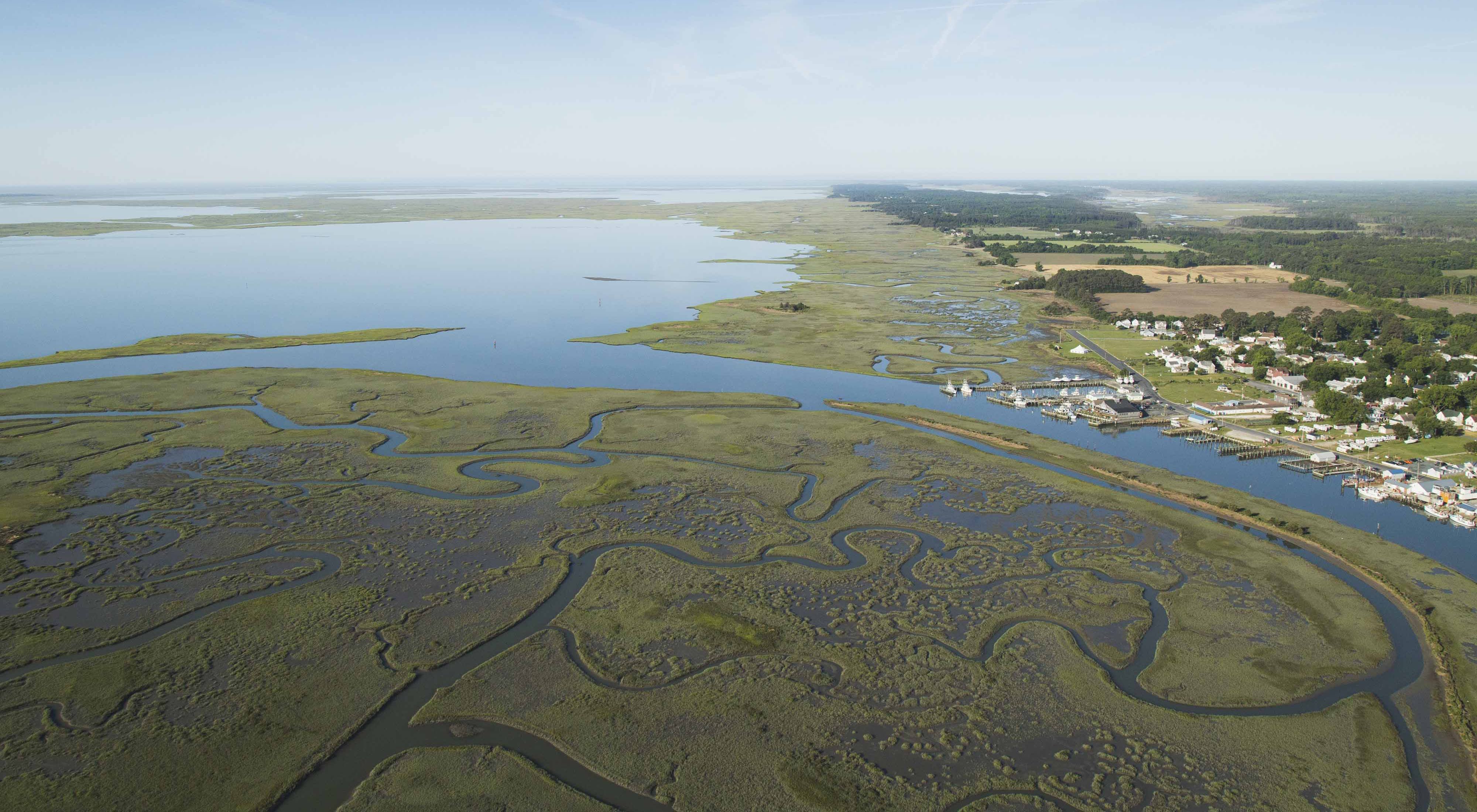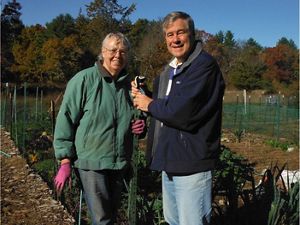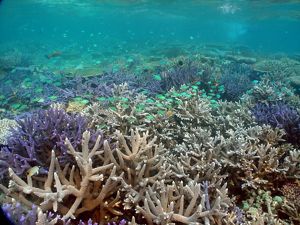Protecting key lands and waters, restoring important systems and implementing climate-smart practices are critical strategies for slowing climate change.

Volunteer Maura Duffy holds up a fistful of collected eelgrass.
Carbon is an important element of life on Earth. But as the saying goes, “it’s the dose that makes the poison.” As forests, grasslands and other ecosystems are damaged or converted for human use, the carbon stored in plants and soil is released into the atmosphere, which contributes to climate change.
“The good news is that we know how to solve for much of that loss,” says Peter Ellis, The Nature Conservancy’s global director of natural climate solutions science. “The answer is right under our feet and all around us. Protecting important natural areas, restoring highly productive systems, and using lands and waters in climate-smart ways can sequester billions of tons of living carbon.”
Building from a legacy of land conservation, expertise in ecological restoration and trusting relationships with people and partners, TNC is investing in the power of nature to help slow climate change. Here are three examples.
BRAZIL
Halting loss, improving productivity
Brazil’s expansive Cerrado region is home to rare wildlife such as jaguars and giant anteaters, and it’s a significant carbon sink. In recent decades, half of the Cerrado’s grassland and woodland habitats have been converted for agriculture—primarily for industrial soy production. Balancing the increasing global demand for food with the livelihoods and cultures of local people is no easy task here, but it is essential to fighting climate change and protecting wildlife habitat. “TNC has developed diverse relationships and tools such as a beef carbon calculator and degraded soil recovery guide to promote more productive and resilient food systems that protect habitat,” says Julia Mangueira, Cerrado director for TNC Brazil. “A recently developed initiative, the Reverte Program, supports rural producers’ efforts to recover degraded areas by using good agricultural practices, financial tools and protocols for machinery, seeds, pesticides and fertilizers.”

Soybeans grow in a field in Brazil.
VIRGINIA
Nurturing wetlands for the carbon economy
In the 1930s, the double punch of a hurricane and disease all but wiped out the vast seagrass meadows of Virginia’s coastal bays. Since the discovery of a small patch of eelgrass in 1999, TNC, partners and scores of volunteers have collected and broadcast more than 72 million seeds from the seagrass to accelerate its spread, which now covers 9,000 acres. Research has revealed that eelgrass stores significant quantities of carbon, so today TNC is working to establish a carbon market for the aquatic plant. “Our goal is to demonstrate how to connect carbon finance to coastal restoration efforts,” says Stefanie Simpson, TNC’s coastal climate program manager. “This would be the first blue carbon project in the U.S. and the first seagrass project globally that is eligible to generate carbon offsets for sale on the voluntary carbon market.”

Alaska
Saving the trees for the forest
Enormous spruce, hemlock and cedar trees anchor Southeast Alaska’s Tongass National Forest. On average, the largest 1% of trees, like many found in the Tongass, sequester up to 50% of the world’s forest carbon—and that’s why TNC recently helped local communities successfully push for an end to large-scale old-growth logging in the Tongass. “Ensuring these trees endure is essential to tackling climate change and maintaining biodiversity,” says Julia Nave, TNC’s conservation forester in Alaska. “The forest not only stores carbon; it also provides vital habitat for five species of Pacific salmon, which in turn feed the forest’s people and wildlife and have been the lifeblood of Indigenous communities since time immemorial.”




